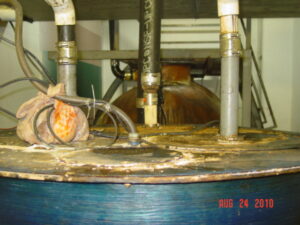Sanitation, I think most of us don’t think about but maybe subliminally it’s there? You throw away garbage because it will spoil and smell bad. Food goes bad and we clean out the refrigerator. We clean the counters and the surfaces because they are dirty. So why don’t restaurants do the same? After binge watching Gordon Ramsey on Hell’s Kitchen. Sanitation is VITAL.
Places people should clean:
- Sides of stoves, refrigerators. Fans need to be cleaned, oils cling to everything.
- Pull out the refrigerator clean the coils, this will save on electricity.
- Tops of everything, stoves, cabinets, lighting – everything.
- Doors and windows.
- Walk in coolers need to be checked frequently. Never stack chicken on top.
- Pantries – rotate stock.
- If you notice bugs, call your Pest Management Professional ASAP. Things will not get better over time.
- Have a system or plan in place, example – wash floor nightly, clean countertops nightly and always say who cleans what.
- This should occur at home as well, daily chores.




